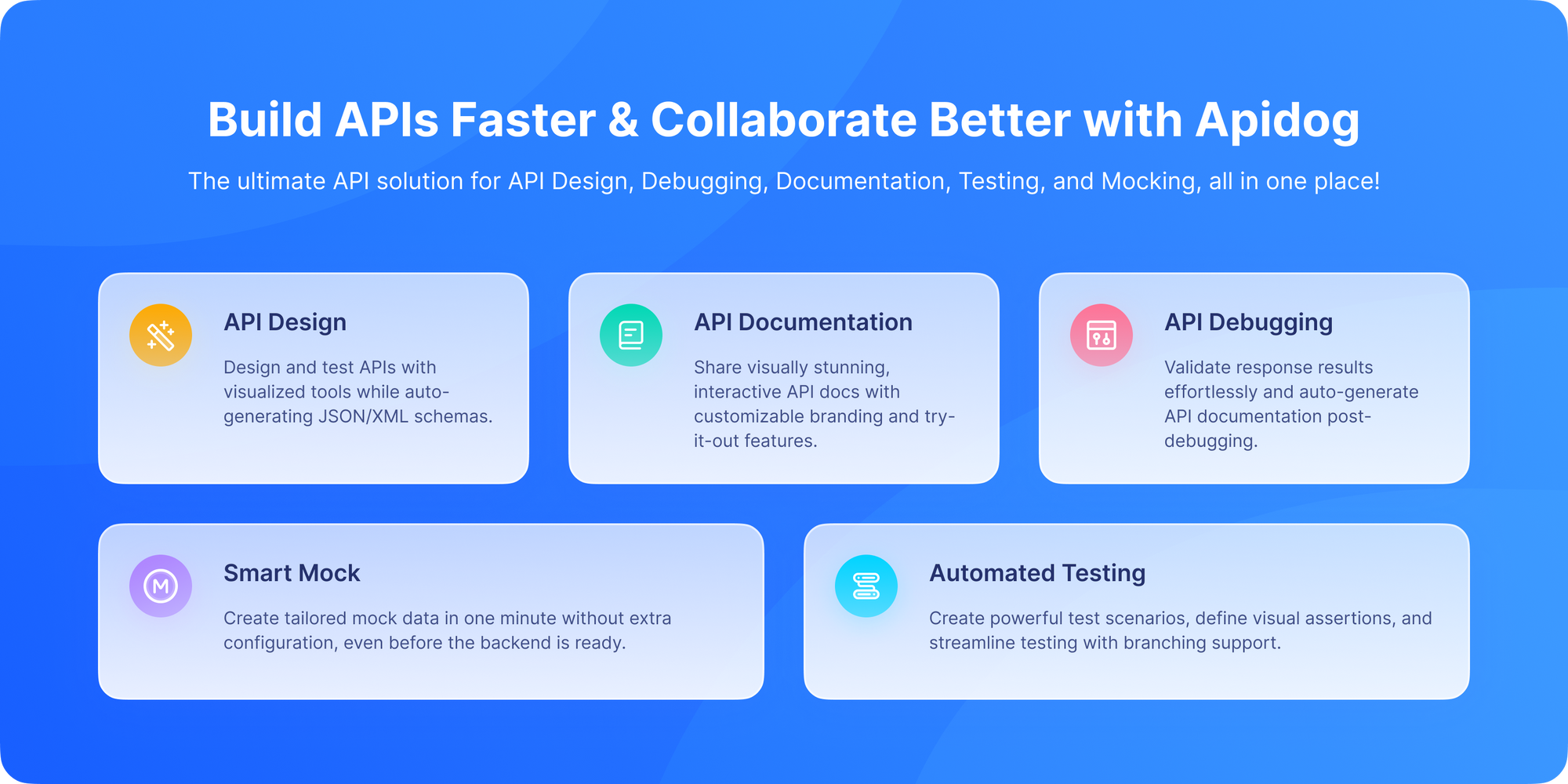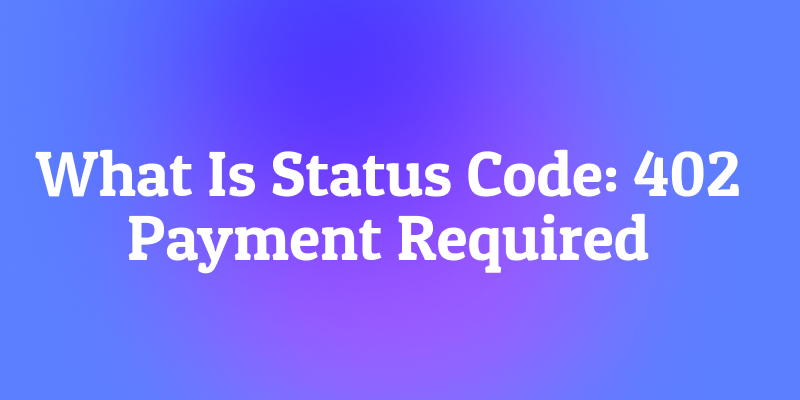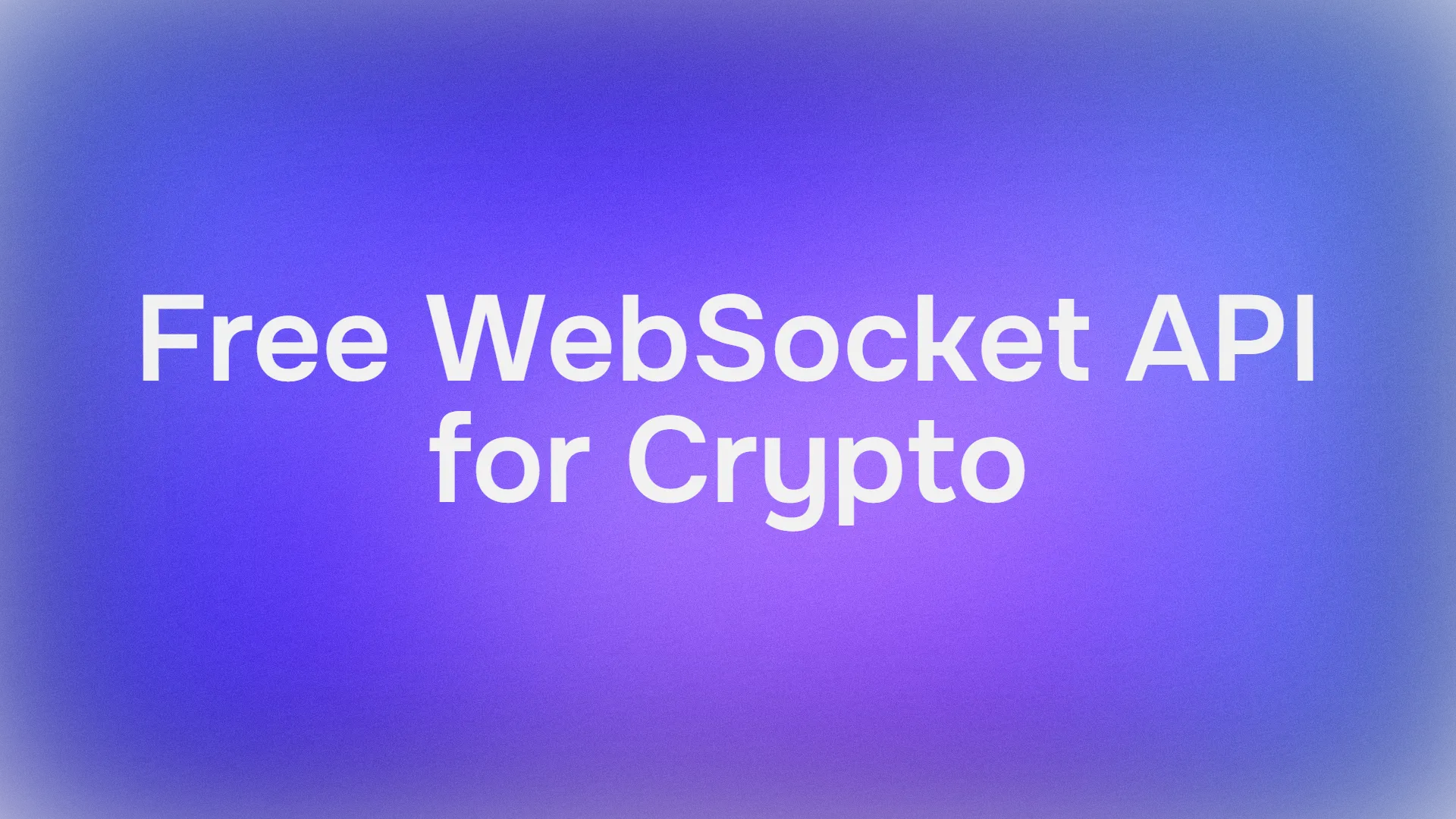You're browsing a news website and you hit your monthly free article limit. Instead of a paywall popping up, your browser itself could display a standardized payment interface. You approve a tiny, one-cent micropayment, and the article loads instantly. No subscription, no account, just a seamless, granular transaction built directly into the fabric of the web.
This was the futuristic vision behind one of HTTP's most intriguing and rarely used status codes: 402 Payment Required.
Unlike its common cousins like 401 Unauthorized or 404 Not Found, the 402 status code is a reserved, experimental code. It's a placeholder for a future that hasn't quite arrived, a future where small, automated payments are a native part of how we browse the web.
It's the server's way of saying, "I have what you want, but you need to pay a small fee to access it. Let's handle this transaction efficiently."
But here’s the catch: as the internet becomes more reliant on digital payments, SaaS subscriptions, and API monetization, the 402 Payment Required status code is becoming increasingly relevant.
If you're fascinated by the potential of web monetization, micropayments, and the roads not taken in internet history, the story of 402 is a captivating "what if" scenario.
401, 403, and 200.Now, let's explore the past, present, and potential future of the HTTP 402 Payment Required status code.
The Problem: The Missing Native Micropayment Layer
The early architects of the web envisioned a more financially fluid internet. They foresaw a need for a standard way to request and make small payments for digital content and services without the friction of creating accounts or entering credit card details for every transaction.
The problems they aimed to solve:
- The Subscription Trap: Being forced to buy a full subscription to access one article or piece of content.
- Account Fatigue: Needing to create a login for every single website you want to read.
- Transaction Friction: The cost and effort of processing a credit card payment for a $0.10 transaction is impractical.
The 402 code was proposed as a protocol-level solution to this friction.
The History of HTTP 402
The 402 status code was originally defined in the HTTP/1.1 specification as “reserved for future use.”
The idea was that, someday, the web might need a standardized way to signal payment requirements. While it wasn’t widely used in the early internet, it was kept in the specification for potential future use cases.
Fast forward to today, with subscription-based services, in-app purchases, and paid APIs everywhere, the relevance of 402 is growing fast.
What Does HTTP 402 Payment Required Actually Mean?
The 402 Payment Required status code is reserved for future use. It is mentioned in the HTTP specification (RFC 7231) with a simple, open-ended description:
The 402 status code is reserved for future use.
This is the complete, official definition. Its original intent, as outlined in earlier RFC drafts, was to signal that the requested content is not available until the client makes a payment.
A theoretical 402 response would need to include headers to specify the payment details. While never standardized, it might have looked something like this:
HTTP/1.1 402 Payment RequiredPayment-Type: MicropaymentAmount: 0.01Currency: USDLocation: /payment-gateway?article=123 # A fallback link
The idea was that a "payment-aware" browser would recognize this status code, interact with a built-in digital wallet, and automatically facilitate the payment before retrying the request.
In other words, the server understands what you’re asking for but refuses to deliver it until you’ve paid.
This makes 402 unique. Unlike 400 (Bad Request) or 401 (Unauthorized), it doesn’t mean you messed up the syntax or credentials. Instead, it’s essentially saying:
- “Hey, your request is fine. But you haven’t paid yet.”
Why You've Never Seen a 402 in the Wild
This brilliant idea never took off for several major reasons:
- No Standardized Payment System: This was the biggest hurdle. The HTTP spec could define the status code, but it couldn't create the universal digital wallet or micropayment system that was needed to support it. Who would manage the wallets? How would currency conversion work? How would fraud be prevented? These were massive, unsolved problems.
- Lack of Browser Support: Without a ubiquitous payment system, browser vendors like Netscape and Microsoft had no incentive to build the complex user interface and security features required to handle
402responses. There was no "killer app" to drive adoption. - The Rise of Alternative Models: While the web waited for micropayments, other models became dominant:
- Advertising: The "if you're not paying, you're the product" model became the default for free content.
- Macro-payments & Subscriptions: Services like PayPal and later Stripe made it easier to handle larger, traditional payments and subscriptions, which became the standard for premium content.
- Freemium Models: Giving a base service for free and charging for premium features became a successful strategy.
The 402 code was a solution in search of a problem that was ultimately solved by market forces in a different way.
Why Is 402 Rarely Seen Today?
Despite being in the spec, many servers and frameworks don’t implement 402 Payment Required. Instead, developers often:
- Return 403 Forbidden for unpaid access.
- Use custom error codes in the response body.
- Handle payment logic outside the HTTP layer.
That said, some modern APIs especially those with monetization features are starting to embrace 402 as a clearer, more semantically correct signal.
The Modern Resurrection: Experimental Uses
While the original vision failed, the code never went away. In recent years, it has found some niche, experimental use cases that align with its original spirit.
1. The Web Monetization Standard
A modern initiative called Web Monetization (spearheaded by the Interledger Foundation) is perhaps the closest realization of the 402 dream. It provides a standard API for streaming tiny payments from a user to a website as they consume content.
While Web Monetization typically uses a meta tag in the HTML (<meta name="monetization" content="$ilp.example.com/me">), some experimental implementations have used the 402 status code to signal that a resource is behind a monetization gate. A browser with a Web Monetization extension could intercept the 402, verify the user's payment stream is active, and then allow the request to proceed.
2. API-Based Payment Gates
Some modern APIs use 402 in a more literal, if less automated, way. For example, an AI API that charges per request might return a 402 when a user's prepaid credits are exhausted.
HTTP/1.1 402 Payment RequiredContent-Type: application/json
{
"error": "InsufficientCredits",
"message": "You have 0 credits remaining. Please top up your account.",
"top_up_url": "<https://api.example.com/billing/add-credits>"
}
In this case, the "client" is another server or a script, not a human using a browser. The client application is expected to programmatically handle the 402 by directing the user to a payment page or using an API key with sufficient credits. This is a practical, if not fully automated, use of the code's intent.
Common Use Cases for 402 Payment Required
Here's where you might see 402 in action:
- SaaS Platforms: A user tries to access premium features without upgrading.
- APIs: Developers exceed their free quota and must purchase additional credits.
- Paywalled Content: Online publishers requiring a subscription before accessing an article.
- Cloud Services: Requesting compute resources without enough balance in your account.
Examples of 402 in APIs and SaaS Platforms
Example HTTP response:
HTTP/1.1 402 Payment Required
Content-Type: application/json
{
"error": "Payment Required",
"message": "You have exceeded your free quota. Please upgrade your plan."
}
Example in an API testing scenario:
- You send a request to an endpoint that requires a paid plan.
- The server returns a 402 Payment Required.
- The error body explains how to resolve it (e.g., "upgrade account" or "add payment method).
402 vs. 403 Forbidden & 402 vs. 402
It's important to distinguish 402 from other client error codes.
402 Payment Required vs. 403 Forbidden:
402means "You can have access, but only if you pay." There is a clear path to obtaining the resource.403means "Access is denied, and paying won't help." This is used for permissions issues (e.g., trying to access another user's private data).
402 Payment Required vs. 402 Payment Required:
This seems odd, but it highlights the difference between the original vision and modern experiments.
- Original Vision: The browser handles the payment automatically and transparently.
- Modern API Use: The client application (e.g., a mobile app) receives the
402and must show a custom payment UI to the user.
How 402 Payment Required Works in Practice
Here’s a typical flow:
- A client (user or app) makes a valid request.
- The server checks:
- Is the user authenticated? ✅
- Has the user paid? ❌
3. Instead of serving the request, the server returns 402 Payment Required with a message like "Upgrade to Premium".
This keeps the client informed and prevents confusion.
Fixing and Debugging 402 Errors
From a user's perspective, fixing a 402 error usually means:
- Adding or updating payment information.
- Upgrading to a higher plan.
- Purchasing credits.
From a developer's perspective, debugging requires:
- Checking the API documentation.
- Inspecting the error response body.
- Verifying whether your request exceeded quotas or lacks billing information.
Testing a Hypothetical 402 with Apidog

Since 402 is experimental, you won't be testing it in production often. However, if you are building a novel API that uses it, or just want to experiment, Apidog is the perfect sandbox.
With Apidog, you can:
- Mock a 402 Response: Easily configure a mock endpoint to return a
402 Payment Requiredstatus with custom headers and a body that describes the payment requirement. - Test Client Logic: If you're building a client that consumes such an API, you can use Apidog's mock server to ensure your application correctly detects the
402status and triggers the appropriate payment flow instead of treating it as a generic error. - Design API Contracts: Use Apidog to document your API's behavior, showing that a certain endpoint may return a
402under specific conditions (like low credit balance).
For developers building APIs, Apidog also helps you design payment-handling workflows before fully implementing them.
Instead of guessing, Apidog shows you exactly how a 402 Payment Required response looks and behaves.
How Developers Can Implement 402 Payment Required
If you're designing an API or service that requires payments, here’s how you can implement 402 correctly:
- Use it only when the issue is specifically payment-related.
- Provide clear instructions in the response body.
- Include error codes for programmatic handling.
Example:
{
"error": "payment_required",
"details": "Please add a payment method to continue using this endpoint."
}
Security Implications of 402 Responses
Using 402 responsibly means not exposing sensitive information. Best practices include:
- Don’t reveal user account balance in the error.
- Use generic messages like “Payment Required.”
- Guide users securely to billing portals.
402 and Paywalls: Practical Applications
Content platforms often face a dilemma:
- Should they block access with a 403 Forbidden?
- Or be explicit with a 402 Payment Required?
By using 402, they can make the payment requirement more transparent. This is especially useful for:
- News websites.
- E-learning platforms.
- API-based monetized data sources.
Future of 402 in API Monetization
As APIs become central to businesses, 402 Payment Required could become the de facto standard for:
- Usage-based billing.
- Tiered subscription models.
- Quota enforcement.
Tools like Apidog will play a big role here, letting developers test and verify 402 responses as part of their API lifecycle.
402 vs Other Payment Handling Approaches
Sometimes developers skip 402 and just:
- Return 403 Forbidden.
- Send a
200 OKwith an error message in the body.
But using 402 is better because it’s standardized, explicit, and easier for clients to interpret.
Conclusion: A Code Ahead of Its Time
The HTTP 402 Payment Required status code is a fascinating artifact of a more idealistic vision for the web. It represents a path where the protocol itself would facilitate a direct, granular financial relationship between content creators and consumers.
While that specific future didn't materialize, the code remains as a placeholder. Its recent use in experiments like Web Monetization shows that the core idea reducing friction for paying for content is still very much alive. The problem is just being solved at a different layer of the technology stack.
The 402 Payment Required status code may not be as common as 404 or 500, but it has an important role in today’s digital economy. As APIs, SaaS apps, and online platforms increasingly rely on payment-based access, we can expect 402 to become more mainstream.
For now, 402 remains a curious footnote. But who knows? With the rise of cryptocurrencies and new payment platforms, we may yet see a future where the browser natively understands the 402 status code. Until then, it serves as a reminder of the web's endless potential for reinvention.
For building the APIs of today, you'll focus on status codes like 200, 201, 400, and 401. And for testing those APIs with precision and ease, a modern tool like Apidog provides everything you need to ensure your applications are robust and reliable.
If you're a developer, tester, or API designer, the best way to get comfortable with 402 is to experiment with it directly. And for that, Apidog is your best friend. It helps you test, debug, and mock payment-required scenarios with ease.
Don't wait until your users complain about unclear payment errors. Download Apidog for free today and start building APIs that handle 402 Payment Required the right way.



